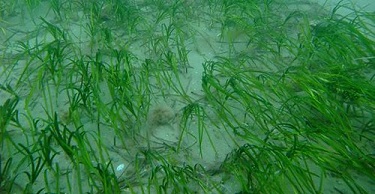640122-seagrass disease.jpg

Eelgrass is one species affected by seagrass wasting disease. Credit: Tony Glen, Seasearch Isle of Man CC BY-NC 2.0
Seagrass beds face many threats these days: pollution, reduced habitat, and stronger tropical storms, to name a few. Another is disease. As the oceans get warmer, organisms that cause diseases multiply quickly. They attack the grass, killing or weakening not just individual plants, but entire meadows.
Seagrass is an important part of the marine ecosystem. It purifies the water, and it provides habitat for fish and shellfish. They attract birds, mammals, and other creatures. So losing the seagrass beds is bad not only for life in the water, it’s bad for a lot of life on land as well.
Beds have been especially hard hit by seagrass wasting disease. In the 1930s, it killed 90 percent of the seagrass along the North Atlantic coast. And today, it’s having a big impact in the Pacific as well.
Scientists recently studied the disease in seagrass beds in the San Juan Islands, off the northern corner of Washington. They looked at how many plants were infected, what impact the disease had on their leaves and roots, and more.
They found that most of the plants in their survey had the disease. As they got it, their leaves lost their green color, then developed big dead spots. Perhaps more important, infected roots held smaller stashes of carbohydrates—food to sustain the grass through the winter.
So as the oceans continue to warm, these and other seagrass beds could face more severe disease outbreaks—and be less able to bounce back from one year to the next.

